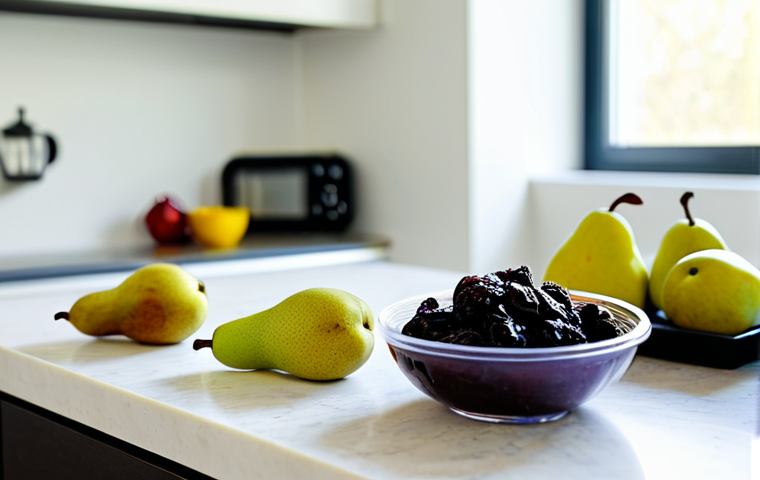Okay, here’s a blog intro on easing baby constipation:Dealing with a constipated baby can be so distressing! I remember when my little one was struggling, and it felt like I tried everything.
It’s tough seeing them uncomfortable and not knowing exactly how to help. From dietary tweaks to gentle massage techniques, there’s a whole world of remedies out there.
Plus, understanding the underlying causes can make a real difference. The latest trends point to a growing interest in probiotics and natural remedies, which seems promising.
Let’s dig into some effective methods and separate fact from fiction. Let’s find out more accurately below.
Decoding Your Baby’s Cries: Is It Really Constipation?

Okay, so your baby is fussier than usual, straining like they’re lifting weights during diaper changes, and maybe even skipping a day or two between bowel movements. First off, take a deep breath! It’s super common for babies to have variations in their pooping patterns. Before you jump to conclusions about constipation, consider what’s normal for your little one. Some breastfed babies can go several days without a bowel movement, while formula-fed babies might poop more frequently. The key is to look at the consistency of the stool. If it’s soft, even if infrequent, your baby is likely fine. If it’s hard, pebble-like, and accompanied by significant discomfort, then you might be dealing with constipation.
Understanding Infant Digestion
Infant digestion is a whole different ball game compared to adults. Their digestive systems are still developing, making them more prone to fluctuations in bowel habits. Factors like the type of milk (breast milk vs. formula), the introduction of solid foods, and even growth spurts can affect how often they poop. Breast milk is generally easier to digest, which is why breastfed babies can sometimes go longer between bowel movements. Formula, on the other hand, can sometimes lead to firmer stools. When you start introducing solids, it can be a bit of a rollercoaster as their system adjusts to new textures and ingredients. It’s all part of the process, so try to stay patient and observant.
Ruling Out Other Culprits
Before you start treating for constipation, make sure you’re not dealing with something else entirely. Gas, colic, or even just plain old fussiness can sometimes mimic the symptoms of constipation. Gas can cause bloating and discomfort, leading to straining and crying. Colic is a whole different beast, characterized by intense, inconsolable crying that can last for hours. And sometimes, babies are just fussy! They might be tired, overstimulated, or just having an off day. Observe your baby closely and consider other possible causes before assuming it’s constipation. Trust your gut – you know your baby best!
The Power of Gentle Tummy Massage
One of the gentlest and most effective ways to relieve baby constipation is through tummy massage. It might sound simple, but the right techniques can work wonders in stimulating their digestive system and encouraging bowel movements. I remember feeling so helpless when my baby was constipated, but learning these massage techniques gave me a sense of control and actually helped! The key is to be gentle and pay attention to your baby’s cues. If they seem uncomfortable or resistant, stop and try again later.
Clockwise Circles
Start by placing your hand on your baby’s tummy, just below their belly button. Gently massage in a clockwise direction, using a circular motion. The clockwise direction follows the natural path of the colon, which helps to move things along. Apply light pressure – you don’t want to push too hard. Continue for a few minutes, watching your baby’s reaction. If they seem relaxed and comfortable, you’re doing it right! This simple technique can often provide immediate relief.
Bicycle Legs
Another great technique is the “bicycle legs” exercise. Gently hold your baby’s legs and move them in a cycling motion, as if they’re riding a bicycle. This movement helps to compress the abdomen and stimulate the intestines. Alternate between each leg, and then try bringing both knees up towards their chest. Be gentle and watch for any signs of discomfort. This exercise is not only helpful for constipation but also great for relieving gas.
Dietary Tweaks: What to Feed a Constipated Baby
What your baby eats (or what you eat if you’re breastfeeding) can significantly impact their bowel movements. If your baby is formula-fed, you might consider switching to a different formula or adjusting the water-to-powder ratio (always consult with your pediatrician first!). If your baby has started solids, certain foods can help relieve constipation, while others can make it worse. Knowing which foods to offer can make a huge difference in getting things moving again.
For Formula-Fed Babies
If your baby is formula-fed and experiencing constipation, the first thing to consider is the type of formula you’re using. Some formulas are more likely to cause constipation than others. Look for formulas that are specifically designed for sensitive tummies or that contain probiotics. You can also try adding a small amount of prune juice to their bottle, but be sure to dilute it with water and consult with your pediatrician first. Adjusting the water-to-powder ratio slightly can also help, but again, always check with your doctor to ensure you’re not compromising their nutritional needs.
Introducing Prunes and Other High-Fiber Foods
Once your baby starts eating solids, you have a wider range of options for relieving constipation. Prunes are a classic remedy, thanks to their high fiber content and natural laxative properties. You can offer pureed prunes or prune juice, but start with small amounts to avoid causing diarrhea. Other high-fiber foods that can help include pears, peaches, plums, and broccoli. Make sure to introduce these foods gradually and in age-appropriate textures. It’s all about finding the right balance to keep things moving smoothly.
The Probiotic Possibility: Balancing Gut Bacteria
There’s a growing body of research suggesting that probiotics can play a role in relieving baby constipation. Probiotics are live microorganisms that help to balance the gut bacteria, which can improve digestion and promote regular bowel movements. While more research is needed, many parents and pediatricians have seen positive results with probiotics. It’s worth considering, especially if other remedies haven’t been effective.
Choosing the Right Probiotic
If you decide to try probiotics, it’s important to choose the right one for your baby. Look for a probiotic supplement that is specifically designed for infants and contains strains like Bifidobacterium and Lactobacillus. These strains have been shown to be effective in promoting gut health and relieving constipation. Be sure to consult with your pediatrician before starting any new supplement, and follow the dosage instructions carefully.
Incorporating Probiotic-Rich Foods
In addition to probiotic supplements, you can also incorporate probiotic-rich foods into your baby’s diet (if they’re old enough for solids). Yogurt is a great option, as it contains live and active cultures that can help to balance the gut bacteria. Look for plain, unsweetened yogurt and introduce it gradually. Other probiotic-rich foods include kefir and fermented vegetables, but these may not be suitable for very young babies. Again, always consult with your pediatrician before making any significant dietary changes.
When to Call the Doctor: Recognizing Red Flags
While constipation is often a temporary and manageable issue, there are times when it’s important to seek medical attention. If your baby is experiencing severe pain, blood in their stool, or other concerning symptoms, it’s always best to err on the side of caution and consult with your pediatrician. They can help to rule out any underlying medical conditions and recommend the best course of treatment.
Signs of a More Serious Problem
Some signs that might indicate a more serious problem include: persistent vomiting, fever, abdominal swelling, refusal to eat, and significant weight loss. If your baby is experiencing any of these symptoms in addition to constipation, it’s important to seek medical attention right away. These could be signs of an underlying medical condition that needs to be addressed.
What to Expect at the Doctor’s Office
When you take your baby to the doctor for constipation, they will likely ask about their feeding habits, bowel movements, and any other symptoms they’re experiencing. They may also perform a physical exam to check for any signs of underlying medical conditions. In some cases, they may recommend further testing, such as an X-ray or blood test. The goal is to rule out any serious problems and develop a treatment plan that is safe and effective for your baby.
Creating a Poop-Friendly Environment
Sometimes, all it takes is a little bit of environmental adjustment to get things moving. Make sure your baby is comfortable during diaper changes, and create a relaxed atmosphere that encourages them to relax and let go. Stress and tension can sometimes contribute to constipation, so creating a calm environment can be surprisingly effective.
Diaper Changes and Positioning
Pay attention to your baby’s positioning during diaper changes. Make sure they’re comfortable and supported. You can try gently holding their legs up towards their chest, which can help to encourage bowel movements. Avoid using wipes that contain harsh chemicals or fragrances, as these can irritate their skin and make them tense up. Instead, opt for gentle, hypoallergenic wipes or simply use warm water and a soft cloth.
The Power of Routine
Establishing a consistent routine can also help to regulate your baby’s bowel movements. Try to feed them at the same times each day, and create a regular diaper-changing schedule. This can help to train their digestive system to work more efficiently. You can also try incorporating a gentle tummy massage into their daily routine, as this can help to stimulate their digestive system and prevent constipation from occurring in the first place.
Glycerin Suppositories: A Last Resort
Glycerin suppositories can provide quick relief for constipated babies, but they should be used as a last resort and only under the guidance of a pediatrician. These suppositories work by lubricating the rectum and stimulating bowel movements. While they can be effective, they can also be irritating and should not be used frequently.
How Glycerin Suppositories Work
Glycerin suppositories are small, solid cylinders that are inserted into the rectum. The glycerin lubricates the rectum and draws water into the stool, making it easier to pass. They also stimulate the muscles in the rectum, which can help to trigger a bowel movement. The effect is usually rapid, with a bowel movement occurring within minutes of insertion.
Potential Risks and Precautions
While glycerin suppositories can be effective, they can also have potential risks and side effects. They can irritate the rectum, causing discomfort and even bleeding. Frequent use can also lead to dependence, making it harder for your baby to have a bowel movement without them. Always consult with your pediatrician before using glycerin suppositories, and follow their instructions carefully. Use them sparingly and only when other remedies have failed.
Navigating Baby Constipation: A Quick Reference Table
| Remedy | Description | When to Use | Cautions |
|---|---|---|---|
| Tummy Massage | Gentle circular motions on the abdomen. | First line of defense, daily preventive. | Avoid if baby is uncomfortable. |
| Dietary Changes | Prunes, pears, high-fiber foods. | If baby is eating solids. | Introduce gradually, watch for reactions. |
| Probiotics | Supplements to balance gut bacteria. | If other remedies fail. | Consult pediatrician first. |
| Glycerin Suppositories | Lubricates rectum, stimulates bowel movement. | Last resort, under doctor’s guidance. | Use sparingly, potential for irritation. |
Wrapping Up
Dealing with a constipated baby can be stressful, but remember you’re not alone. By understanding their digestion, trying gentle remedies, and knowing when to seek medical help, you can help your little one find relief. Trust your instincts and remember every baby is different. Here’s to happier tummies and easier diaper changes!
Good to Know Information
1. Always consult with your pediatrician before making significant changes to your baby’s diet or starting new supplements.
2. Tummy massage is most effective when your baby is relaxed and comfortable, so choose a time when they are calm.
3. When introducing new foods, start with small amounts and watch for any allergic reactions or digestive issues.
4. If you’re breastfeeding, your diet can affect your baby’s bowel movements. Stay hydrated and eat plenty of fiber-rich foods.
5. Creating a consistent routine and a relaxed environment can significantly improve your baby’s digestive health.
Key Takeaways
Infant constipation is common and often manageable with simple remedies like tummy massage and dietary adjustments.
Breastfed babies and formula-fed babies may have different bowel movement patterns.
Probiotics can support gut health, but always consult a pediatrician before starting supplementation.
Glycerin suppositories are a last resort and should only be used under medical guidance.
Seek medical attention if your baby has severe pain, blood in their stool, or other concerning symptoms.
Frequently Asked Questions (FAQ) 📖
Q: What are some immediate things I can do to help my constipated baby feel better?
A: Honestly, when my kid was backed up, I started with the basics: a warm bath! It’s surprisingly soothing for them. Then, gentle belly massage in a clockwise direction really seemed to get things moving.
You can also try bicycle legs – gently moving their legs like they’re pedaling a bike. Of course, always check with your pediatrician first, but these home remedies gave my little one some quick relief.
Q: When should I be really worried about my baby’s constipation and seek professional help?
A: Okay, so here’s the deal: occasional constipation happens. But, if your baby is consistently straining for more than a day or two, if there’s blood in their stool, if they are refusing to eat, or if their tummy seems really hard and bloated, those are definitely red flags.
Also, if they are screaming in pain and inconsolable, don’t hesitate to call your doctor. It’s always better to be safe than sorry when it comes to your little one’s health!
Q: I’ve heard about changing my baby’s formula. Is that something I should consider if they’re constantly constipated?
A: Switching formula can be a tricky decision, and honestly, it’s something you should discuss with your pediatrician before making any changes. Sometimes, a different formula can help, especially if it’s a sensitive formula or one with added probiotics.
However, frequent formula changes can also upset their little digestive system, so it’s essential to get professional advice to make sure you’re doing what’s best for your baby.
My friend went through a similar situation, and her pediatrician recommended a specific formula with partially hydrolyzed protein, which made a big difference.
📚 References
Wikipedia Encyclopedia
구글 검색 결과
구글 검색 결과
구글 검색 결과
구글 검색 결과
구글 검색 결과




